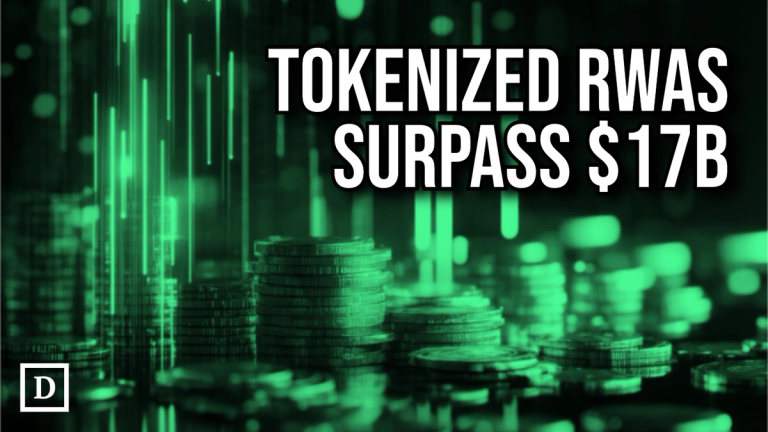
Data portability is a commonly-repeated promise of crypto. “Take your followers and social graph across the internet.” “Bring your video game items across games and platforms.” “Log into any site with a single, unified identity.” These claims have excited builders and developers, but haven’t yet gone mainstream. Recent platform shifts have highlighted the fragility of our digital lives. With talks of a potential TikTok ban, creators face losing years of content and audience relationships overnight. Meanwhile, as US consumers embrace new AI models like DeepSeek, built in China, they face similar questions about where their data lives and who might get access to it. These are symptoms of a fundamental problem: users don`t truly own or control their data. We live on rented land. Many of today`s leading crypto investors wrote about data portability and user sovereignty in the early days of Web2. This vision of an internet — where users, not platforms, control their digital lives — was one of the driving forces behind crypto. While crypto has succeeded in financial applications, this promise of portable data and a self-sovereign internet remains unfulfilled. We`ve seen many attempts: NFTs letting you bring items across games, decentralized social networks like Farcaster and Bluesky promising portable social graphs, and verifiable identity standards. None have (yet) seen widespread adoption. The reality? While early internet thinkers care deeply about the principles of data sovereignty, most users have a simpler question: What can I actually do with it? Without AI, most data is only relevant within the walled gardens of the platform it’s on. With AI, it becomes a valued digital commodity and a tool to power nearly every application. Your message history helps AI understand your writing style, your preferences, and your relationships. With many users storing their data in self-sovereign wallets, developers can build AI experiences that are truly personalized. AI finally provides the “why” on data portability, in the form of a better product experience rather than ideology alone. There is still a cold start problem . It’s inconvenient for users to connect their data. And for developers, the mindset today is: if you convince users to upload their data to your platform, why would you make it easy for them to take it elsewhere? This creates a cycle where each new platform becomes another walled garden, recreating the very problem they set out to solve. This is where new incentive structures could finally break the extractive cycle. DataDAOs create an immediate opportunity for users to port their data through financial incentives, solving the cold start problem, so long as the data is onboarded in a self-sovereign, interoperable way, like on Vana. As more users bring their data into these interoperable systems, developers can build applications that weren`t possible before. Imagine a personalized health coach that can analyze your sleep data from Oura, your workouts from Strava, your nutrition from food delivery apps, and your stress levels from communication patterns. Or, an AI assistant that truly understands you because it can access your complete digital history while maintaining your privacy through granular permissions. This solves a critical problem that has plagued past attempts at data portability. Users won`t export their data without clear benefits, and developers won`t build for portable data without users. Data DAOs break this deadlock by making it immediately worthwhile for users to connect data. More importantly, once users make their data self-sovereign, entirely new kinds of applications become possible. AI agents can access your complete digital history to provide truly personalized experiences. Developers can build applications that combine data in ways that weren`t possible when it was siloed across platforms. We know there’s a lot of demand for AI training data – many major model providers are poised to hit a data wall soon, making them search for publicly unavailable datasets to train newer, higher-performing models. New models like DeepSeek have shown the value of high quality data, with carefully curated human-generated examples to bootstrap their novel training method. At the same time, user data policies like GDPR and CCPA legally require platforms to allow users to export their data in a usable, standardized format. Networks like Vana allow users to monetize their data by collectively bargaining with model trainers in need of valuable training data no longer available on the public internet, and make it interoperable for true data sovereignty. Two forces converging – the proliferation of AI, and new financial incentives – create the potential for both users and developers to benefit from data portability. The interests of users, developers, and data networks finally align. Users gain immediate value plus better AI experiences, developers get access to rich user data to build new applications, and networks grow stronger with each new participant. For the first time, we have both the technology to make data portability valuable and the incentives to drive adoption. Crypto has yet to deliver on its original promise of a self-sovereign, interoperable internet where users own their data, unfettered by Web2’s walled gardens. By creating financial incentives to bring data onboard and leveraging AI`s capabilities, we finally have a window of opportunity to make the internet truly user-owned.
CoinDesk
You can visit the page to read the article.
Source: CoinDesk
Disclaimer: The opinion expressed here is not investment advice – it is provided for informational purposes only. It does not necessarily reflect the opinion of BitMaden. Every investment and all trading involves risk, so you should always perform your own research prior to making decisions. We do not recommend investing money you cannot afford to lose.
World Liberty Financial Loses $51.7M in Crypto Amid Trump’s Tariff Impact

Trump’s tariffs have not only shaken financial markets but have also impacted World Liberty Financial’s crypto holdings amid escalating trade tensions. With uncertainty looming, market participants wonder if this downturn presents a buying opportunity for long-term accumulation. WLFI’s Crypto Portfolio Decline World Liberty Financial (WLFI), backed by US President Donald Trump, recently invested $242.77 million in cryptocurrencies between January 19 and 31. Following Trump’s announcement of new tariffs, the crypto market experienced significant volatility, leading to a decline in WLFI’s portfolio by more than $51.7 million. According to the latest findings by Spot On Chain, this represented a 21% decrease during the period. The most significant losses were in Ethereum (ETH), with a drop of $36.7 million (24.4%); Wrapped Bitcoin (WBTC), down $8 million (12.1%); and Ethena (ENA), which fell by $2.05 million (43.7%). Despite these setbacks, Trump has stated that the “pain” from the newly imposed trade tariffs will be “worth the price.” Given WLFI’s proactive asset management and aggressive accumulation in recent weeks, it remains to be seen whether the fund will capitalize on the current market dip to amass more assets. The first week of the month kicked off with significant economic turbulence in the United States, with financial markets already in freefall. Trump’s latest tariffs on Canada, Mexico, and China have further intensified economic concerns, with the crypto market seeing billions in liquidation after plummeting to its lowest levels in 2025. Markus Thielen, founder of 10x Research, noted that despite the recent trade measures being widely anticipated ahead of their February 1 implementation, they still managed to disrupt Bitcoin’s rally and put key technical support levels in jeopardy. He went on to highlight that while the market was preoccupied with the DeepSeek saga, it appears to have underestimated the geopolitical fallout and potential retaliatory measures from foreign leaders. This oversight may have contributed to the increased volatility in crypto markets, as investors reacted to the broader economic implications of escalating trade tensions rather than just the expected tariff impositions themselves. Factors at Play Moving on, there are three crucial factors that could further affect the market’s trajectory. For instance, Monday’s ISM Manufacturing PMI will be a key indicator of business conditions. Tuesday features the JOLTS Job Openings report, while Wednesday delivers both nonfarm employment data and the ISM Services PMI, which reflects the health of the service sector. Additionally, Friday’s jobs report will reveal employment trends, such as job creation and unemployment rates, which will help investors gain insight into the US labor market. The post World Liberty Financial Loses $51.7M in Crypto Amid Trump’s Tariff Impact appeared first on CryptoPotato . CoinDesk

XRP Price Prediction For February 4
The post XRP Price Prediction For February 4 appeared first on Coinpedia Fintech News After a sharp decline across the crypto market, all eyes are on XRP due to its impressive recovery in the last few hours. XRP’s 55% Rally Recovers Recent Fall According to available data, XRP, which had witnessed a massive price drop of 35% in the past 48 hours, has experienced a notable gain of over 55% and has formed one of the biggest bullish candles in the past two years. Looking at the price reversal, XRP appears bullish. Additionally, this rally doesn’t seem to be stopping easily, as pro-crypto United States President Donald Trump paused the tariff on Mexico, which he had earlier announced on his X handle. Following the update, the overall cryptocurrency market has begun recovering, including Bitcoin (BTC), which has witnessed an over 12% price reversal in the past 12 hours, along with other cryptocurrencies. $80 Million Worth of XRP Inflow Amid this record price reversal, long-term holders, investors, and whales who recently bought the dip have been dumping their tokens on exchanges, as reported by the on-chain analytics firm Coinglass . Data from spot inflow/outflow reveals that exchanges have witnessed an inflow of over $80 million worth of XRP in the past 24 hours. This substantial inflow amid this record reversal seems to be a potential sell-off for profit booking and has the potential to cause selling pressure and further price decline. Source: Coinglass XRP Technical Analysis and Key Levels According to expert technical analysis, XRP appears bullish and seems to be forming a large bullish hammer candle. For the rally to continue, XRP needs to close above $2.70 or $2.65. If that happens, a new all-time high may be on the horizon. Source: Trading View If this happens, there is a strong possibility that we could see a new all-time high for XRP. On the positive side, with the Relative Strength Index (RSI) at 44, it appears that XRP has significant room to witness an upside rally. CoinDesk











